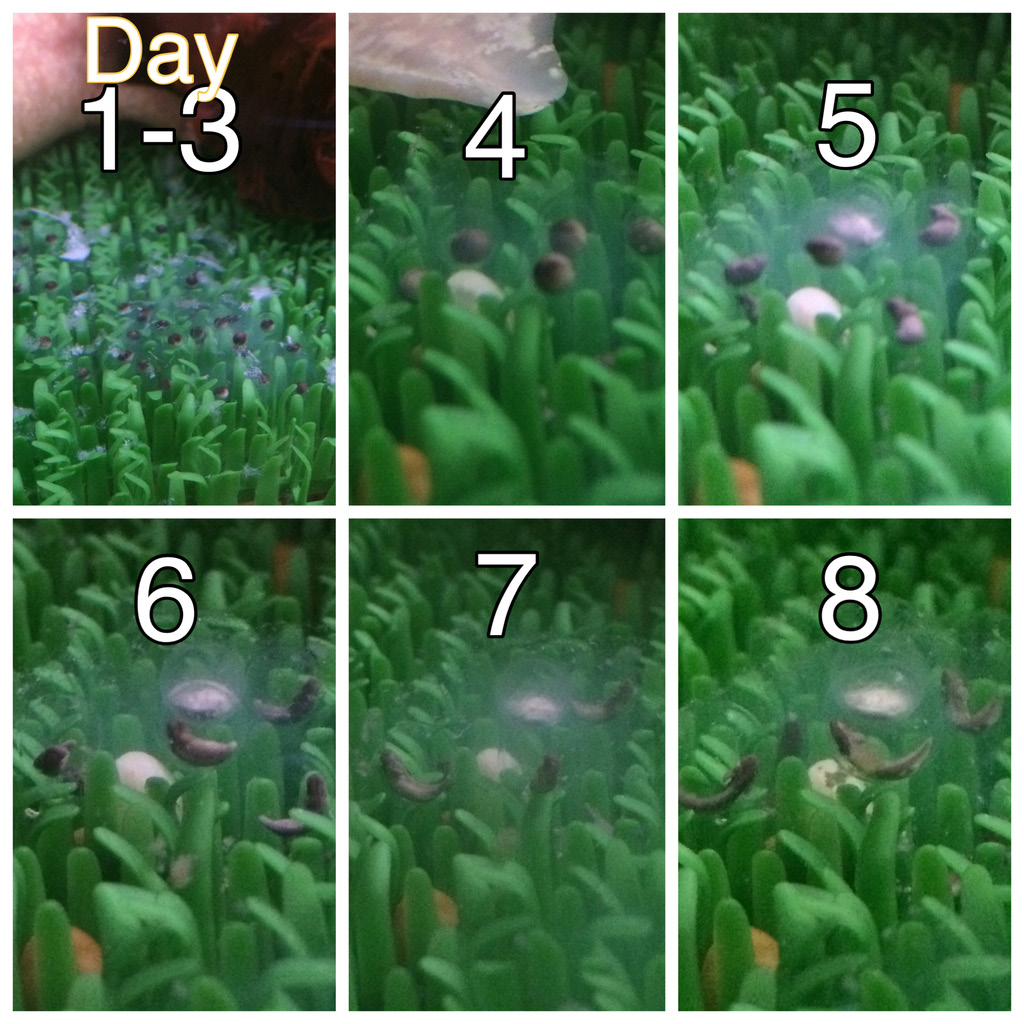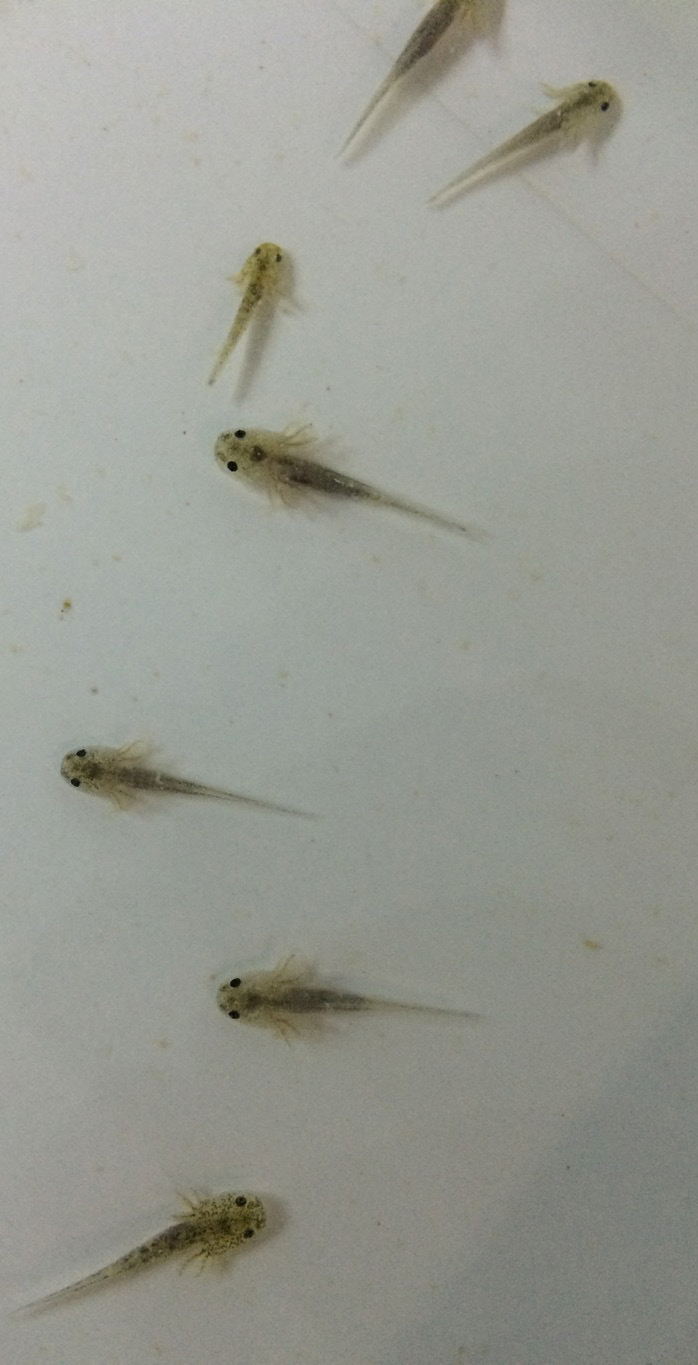It’s a fish! It’s an amphibian! It’s a reptile!
Are we playing guess that pocket monster? No, we’re just trying to figure out what an axolotl is.
Some call it the “Mexican walking fish,” but it’s not a fish. Nor is it a reptile, as the odd legs might lead some to believe.
Actually, an axolotl is an amphibian, which puts it in the same group of animals as frogs, toads, and salamanders. The scientific name of this creature is Ambystoma mexicanum, and it is closely related to the tiger salamander. Its name is derived from classical Nahuatl, and it originates from several lakes in Mexico, including Lake Xochimilco, which lies underneath Mexico City itself.
Axolotls are strange creatures indeed. Amphibians spend their larval stages in water, then undergo a process of metamorphosis that allows them to grow lungs and live on dry land. The axolotl, on the other hand, proceeds from the larval stages to adulthood without going through any kind of metamorphosis. It stays in water for the entirety of its lifespan.
You might not expect these creatures to make it to local shores. But let us introduce you to Nigel Sia, who holds the distinction of the first—and so far, the only—Filipino fishkeeper to successfully breed axolotls in captivity.

Animal Scene (AS): How did axolotls come to be in the Philippines? Is it possible to obtain axolotls legally?
Nigel Sia (NS): Axolotls are one of the most unique and interesting creatures on the planet. Some may find them ugly, some may find them cute. But they definitely turn heads. I started wanting to own one in 2009. When I went to Korea the next year, I finally saw one. It was a beautiful albino leucistic that caught my attention. Unfortunately, it wasn’t for sale.
When I finally saw them here in the Philippines last 2012, I jumped at the opportunity to get one for myself. The first two I got were a golden albino and a black melanoid. You can buy axolotls at pet shops, or online.
AS: Wikipedia notes, “Axolotls are unusual in that they reach adulthood without undergoing metamorphosis. Instead of developing lungs and taking to land, the adults remain aquatic and gilled.” Is this important to fishkeepers like yourself?
NS: That’s one of the reasons why I chose to keep axolotls. Setting up a habitat is easier, as it’s purely aquatic. The external fluffy gills are a distinct feature that makes them special among salamanders.
AS: Axolotls can regenerate limbs; as a result, they are used in scientific research. Is this part of the reason why you decided to breed them? Were you trying to help conserve them?
NS: I’m not planning to do any research regarding regeneration. When I read that axolotls were easy to breed, I looked for breeders here in the Philippines. But when I found none, I was challenged to breed them myself. I got help from the more experienced members of the international Facebook group Axolotl-Aholics.

AS: What are the basic facts related to axolotls?
NS: Axolotls can grow to about 12 inches long, and live for about 12 to 15 years. They need cold water to survive.
AS: Where does the axolotl get its unusual name from?
NS: The word “Axolotl” means “water servant”: ATL – water, XOLOTL – servant.
AS: What makes axolotls special? What distinguishes them from other salamanders or amphibians? Some people say axolotls look grotesque, but thanks to Pokemon, younger readers are becoming interested in them. They seem to find them cute.
NS: As I said, axolotls are ugly and cute at the same time. Their most important characteristic is their ability to regenerate their limbs.
AS: Was it difficult for you to raise axolotls? What are the most important things you’ve learned about keeping them?
NS: It’s difficult because I have to maintain a certain temperature for them to survive. Water quality and temperature are the two most important things to consider when keeping an axolotl. On the other hand, axolotls are not picky eaters, so feeding them isn’t a challenge.
AS: What are the challenges that you face as an axolotl keeper and breeder?
NS: The axolotl tank needs to be placed in a room with 24/7 air-conditioning. Since they have very poor eyesight, I had to improvise a feeding stick for them. Food has to come in contact with their mouths so they can snatch a bite.
AS: Is the care and feeding of axolotls different from or similar to those of other lizards?
NS: Caring for axolotls is like caring for fish, as opposed to caring for lizards. It’s really more like a basic aquarium. No need for special lighting or water circulation devices. Filtration is similar to those in fish tanks. The water temperature should be Axolotlkept lower than 25 degrees Celsius.
AS: What do axolotls eat?
NS: I usually feed mine ground beef heart, mixed with Spirulina. Treats include shrimp, worms, and fish. Pellets are recommended by most axolotl keepers, but they are hard to find here.
AS: What are the characteristics of a healthy axolotl? Conversely, how can keepers tell that it’s sick? Any species-specific problems or illnesses?
NS: A healthy axolotl is not too skinny. Its gills should be fluffy, and its body coloration should look bright and healthy. A sick axolotl shows red patches on its skin, and has a curled tail. Since they don’t have scales, they are more sensitive to water; you have to make sure that the water in which they live is clean, clear, and free of parasites or other microorganisms.
AS: Any misconceptions about the axolotl that you’d like to correct?
NS: They will not move to land once they mature. Some people insist that they can adapt to our tropical climate, while others think that they can co-exist with other fish inside a tank.
AS: What does an interested fishkeeper need to consider before acquiring and caring for axolotls?
NS: Before caring for an axolotl, read a care sheet first. Prospective keepers must make sure that they can carefully regulate the temperature of the axolotl tank and its surrounding area. Position the tank so it has easy access to water supply and drainage. Change the water every week, and do spot cleaning every day.
AS: Tell us about the beginner’s mistakes that you made when you first started keeping axolotls.
NS: 1) I added ice to the tank to lower the temperature, instead of putting the tank in an air-conditioned room, or buying an aquarium chiller.
2) I placed small pebbles inside the tank as substrate.
3) I added feeder fish to the axolotl tank. The feeder fish ended up picking at the axolotls’ gills.
4) I didn’t pay any attention to the size differences between axolotls in different stages of life. They tried to cannibalize each other.
AS: What are the risks involved in keeping an axolotl?
NS: Axolotls shouldn’t be kept with other creatures. Make sure to get them from a trusted supplier.

AS: Do you have any interesting, funny, or unique stories of breeding and raising axolotls?
NS: They seem to be smiling at the camera all the time!I put blocks of ice into the axolotl tank to encourage them to breed. After I was able to successfully breed them, I was able to sell a lot of eggs to people all over the Philippines. Selling eggs is more viable than selling hatchlings.Raising newly-hatched axolotls is very hard and challenging since I don’t have much Daphna, which is the only food they’ll eat.At the same time, breeding was a very exciting and rewarding experience. And I can now share it with my fellow hobbyists.
AS: Do axolotls interact with humans? Can they show affection the way traditional pets do, or are they “look but don’t touch” pets? Can they be taken out of their tank?
NS: They cannot be taken out of their tank. Some keepers can get their axolotls to show affection by offering a finger to nibble. It’s safe because axolotls have no teeth.
This appeared in Animal Scene’s January 2017 issue.






